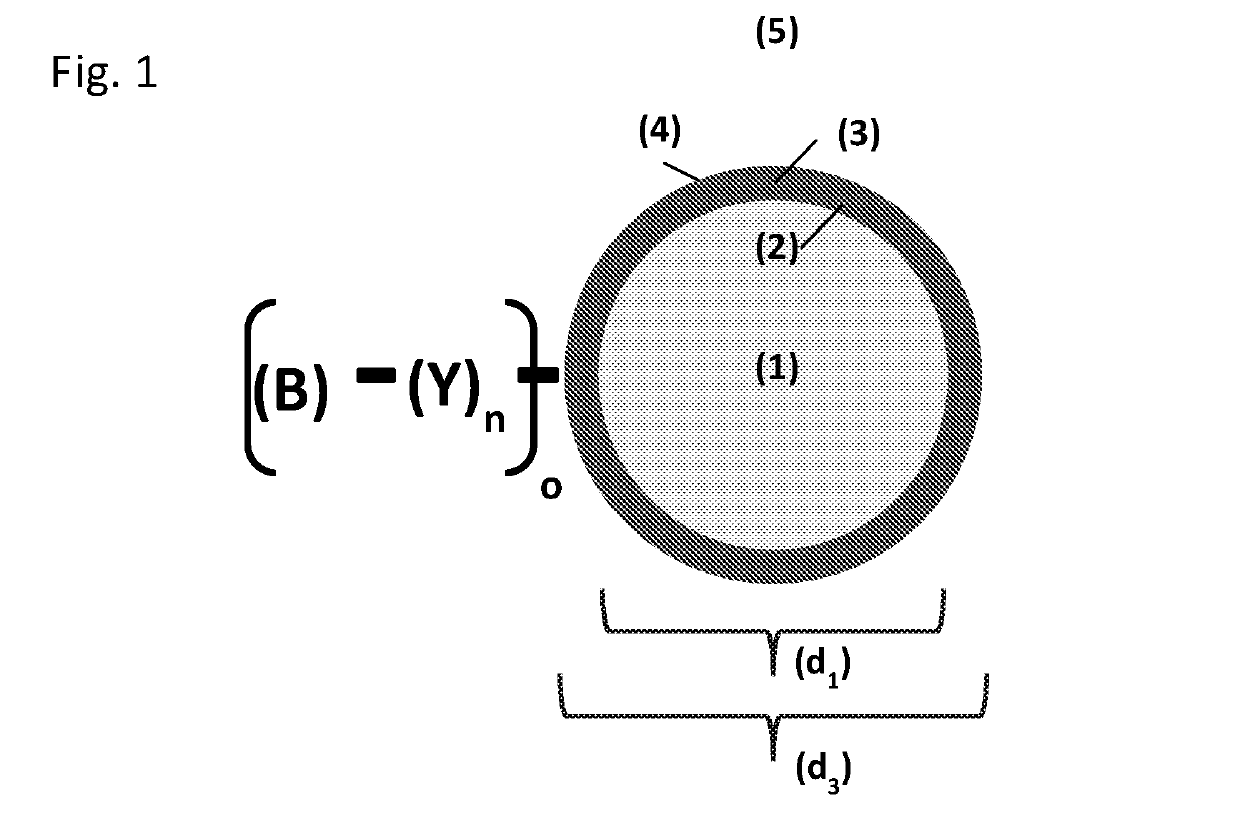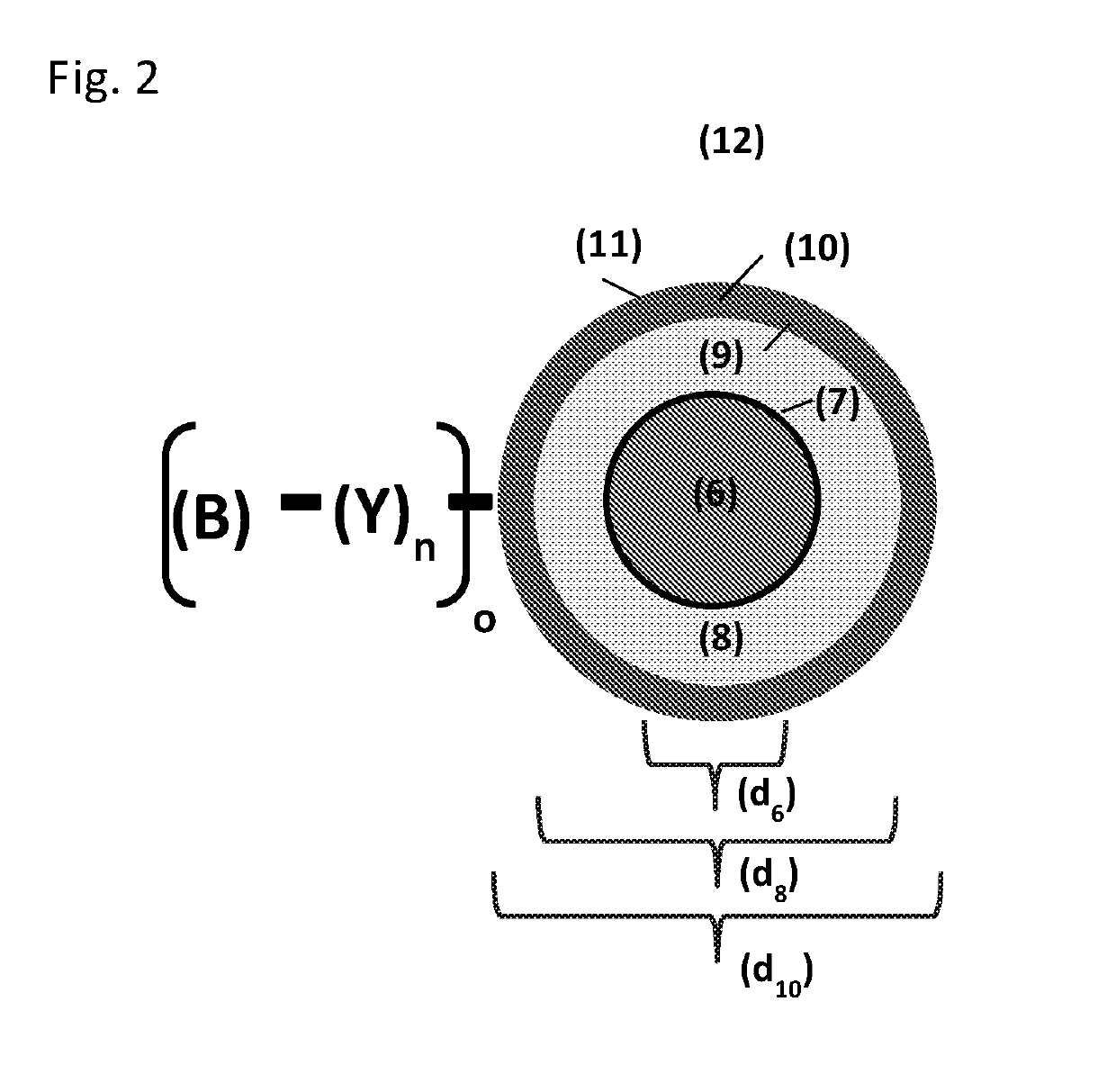Encapsulated pre-analytic workflows for flow-through devices, liquid chromatography and mass spectrometric analysis
- Summary
- Abstract
- Description
- Claims
- Application Information
AI Technical Summary
Benefits of technology
Problems solved by technology
Method used
Image
Examples
example 1
[0244]Porous, co-polymeric spherical particles with an average particle size of 60 μm are prepared following the process detailed in U.S. Pat. Nos. 5,882,521; 5,976,367; 6,106,721; 6,254,780; 6,468,422; and 6,726,842 or U.S. Pat. No. 9,211,524; or 9,120,083 and are surface modified using the process detailed in U.S. Pat. Nos. 7,731,844; 8,197,692; or 8,791,220. In particular the surface of the co-polymeric materials are functionalized to display a chloromethyl group on the aromatic substituent groups
[0245]Separately, encapsulating material (<60 μm) are prepared following the method of Caruso (Phys. Chem. Chem. Phys., 2011, 13, 4782); Sukhishvili (Chem. Mater., 2006, 18 (2), 328); US20150164805; EP2213280; or Schwendeman (J Control Release. 2014; 196:60). Materials used to prepare encapsulating material include (but are not limited to): emulsifiers, materials with varied melting points, materials with different HLB, phospholipids, fatty acids, plant sterols, sorbitan esters, bees wax...
example 2
[0253]The process of Example 1 is modified, having the target molecule be trypsin. The workflow consists of the release of trypsin in the presence of a protein, resulting in the digestion of the protein and formation of peptides. Resulting peptides then elute from the device and are further analyzed by LC / MS. Because the trypsin was maintained in the encapsulating material on the scaffolding material it displayed longer stability and good digestion performance. Because the encapsulating material is immobilized on the scaffolding material there is no significant increase in matrix effects, enhancement or suppression.
example 3
[0254]The process of Example 2 is modified, having the target molecule be trypsin. The workflow consists of the release of trypsin in the presence of a protein, resulting in the digestion of the protein and formation of peptides. The formed peptides interact with the porous co-polymeric scaffolding material and do not elute from the device until the elution strength is suitable (e.g., modification of acetonitrile and water composition during an elution step). Resulting peptides then elute from the device and are further analyzed by LC / MS. Because the trypsin was maintained in the encapsulating material on the scaffolding material it displayed longer stability and good digestion performance. Because the encapsulating material is immobilized on the scaffolding material there is no significant increase in matrix effects, enhancement or suppression.
PUM
 Login to View More
Login to View More Abstract
Description
Claims
Application Information
 Login to View More
Login to View More - Generate Ideas
- Intellectual Property
- Life Sciences
- Materials
- Tech Scout
- Unparalleled Data Quality
- Higher Quality Content
- 60% Fewer Hallucinations
Browse by: Latest US Patents, China's latest patents, Technical Efficacy Thesaurus, Application Domain, Technology Topic, Popular Technical Reports.
© 2025 PatSnap. All rights reserved.Legal|Privacy policy|Modern Slavery Act Transparency Statement|Sitemap|About US| Contact US: help@patsnap.com



